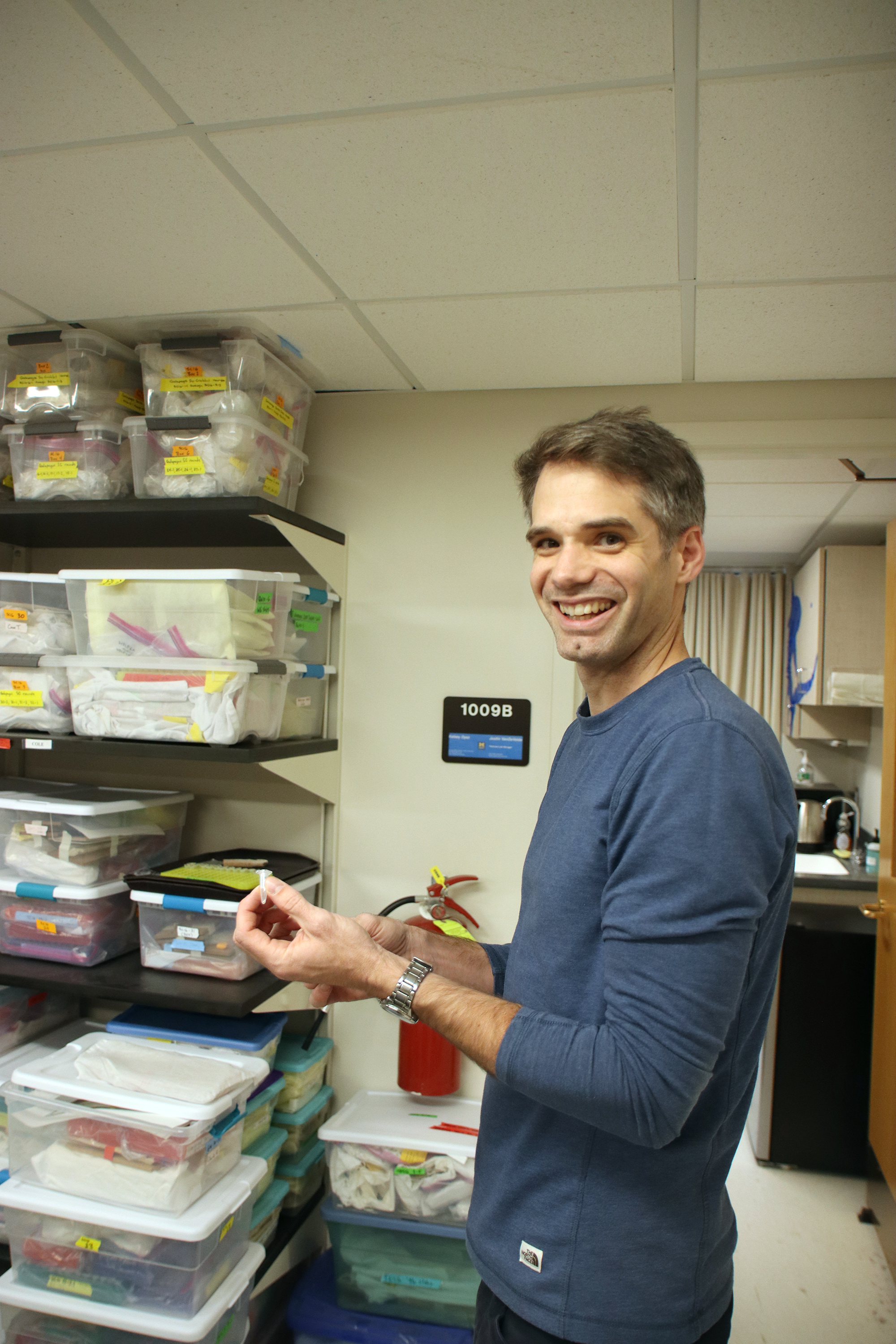STAFF – Climate Scientist in Julia Cole’s Climate Lab
“I’m a climate scientist and studied geology as an undergraduate, and then paleoclimatology and paleoceanography as a grad student. I did that research for several years as a postdoc in various parts of the world and then I came to the University of Michigan to help manage a lab in the earth sciences department. We run mass spectrometers and isotope plasma spectrometers; we use geochemistry from marine fossils and sediments to understand how the ocean changed in the past, and how the climate changed in the past. The work we’re doing right now is very focused on just the very last few decades to centuries to thousands of years. It’s very much focused on ‘How does the climate system work right now?’ How is the climate system right now being impacted by fossil fuels, by increased carbon dioxide, by increased temperatures, rising sea level and [how can] learning about the climate system inform models for how climate changes in the future?
I’ve been in this space for much of my life, even as a child growing up. I’ve always loved rocks and fossils, but my parents also built a passive solar home that used very little carbon. It’s built into the side of a hill, where the earth itself provides insulation around the north and west sides with mostly large south facing windows, so the sun helps to heat the house in the winter. It was warm in the middle of winter in our house, without any gas furnace. And the idea is, then you have overhangs so in the summer when the sun is higher, the midday sun doesn’t shine in directly. And with that you can have natural cooling. They did also have a woodstove, to provide heat at night and on cloudy days.
I think the tipping point for when I decided to study climate change as a career was doing fieldwork. One particular outcrop of rocks stands out. We were looking at some rocks, an outcrop of rocks that cycled back and forth between two different rock types. There was one, Scaglia Rossa, in the Italian Appenines, like brownish red, and then one that was white (Scaglia Blanca) and then the red one, then the white one again. Looking at those like regular cycles in an ancient climate was fascinating to me. Why was the climate oscillating back and forth between these two things? You can see the climate going back and forth between two states, and it was a clear environmental change. What causes the climate to, in that case, naturally vary so much that it gets recorded in these rock layers? To me, that was the tipping point of saying, okay, I really want to understand this. This is a fascinating part of the Earth system and I’m trying to figure that out. Those were ancient climates millions of years ago, but it got me on the track of, okay, there’s geological and chemical evidence out there in the world for how the climate has changed in the past. And that will directly inform our knowledge of the climate system. That can show us what causes climate extremes and how different things can be. We only have one Earth, so as geologists we can’t always do the same controlled experiments that other fields might be able to.”

“It has been interesting to see the public awareness of climate change change through time. For me, it was the early 2000s, when I started to hear people who weren’t in science [begin] to say, ‘Wait a second–’ and eventually I began to hear less ‘is climate change real?’ and more questions like: ‘How much of a problem is it?’ ‘How are we going to be able to surmount this?’ You might get slightly different answers if we ask: ‘To what degree is this a problem compared to other problems in the world?’
For me, some of the biggest problems are about ecological change. Certain habitats are going away forever. Crops are going to have to be [and] are already starting to be planted differently in different places. Another big one is sea level rise. Communities around the world that are very close to sea level that are being displaced. Often that becomes a social justice issue too.
Is climate change a big challenge? Yes. Is it the end of the world? No. Humans are creative and resilient, and are finding many different ways to address problems in the world. But it is deeply intertwined as a social justice issue, right. These are very related to what communities get impacted. Where do fossil fuel centers get located? Where do renewable energy resources get located? Who has better access to residential solar, household batteries, EVs, and other technical solutions? All these things are important aspects that need to be considered not just within a single field, right? I don’t want to see a room with [only] climate scientists trying to decide what to do about climate change. We need to collaborate, we need to work with lots of different people with lots of different areas of knowledge in order to address questions like this. “
As part of the LSA Year of Sustainability, LSA Dean’s Fellow Cherish Dean sat down with a range of students, staff, and faculty across the University to illustrate the various relationships people across campus already have to this work, to showcase ways people can get involved, and to highlight the reasons that this work should matter.
To view an abbreviated transcript of Cherish’s full conversation with Kelsey, click here.
Cherish can be reached at cherishd@umich.edu. To contact the LSA Year of Sustainability Team as a whole, please contact sustainable-lsa@umich.edu .

